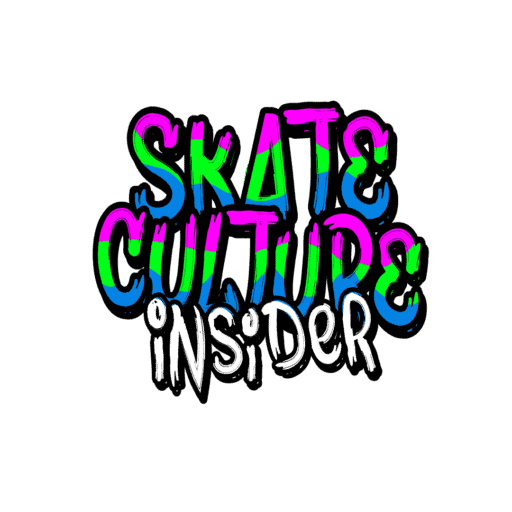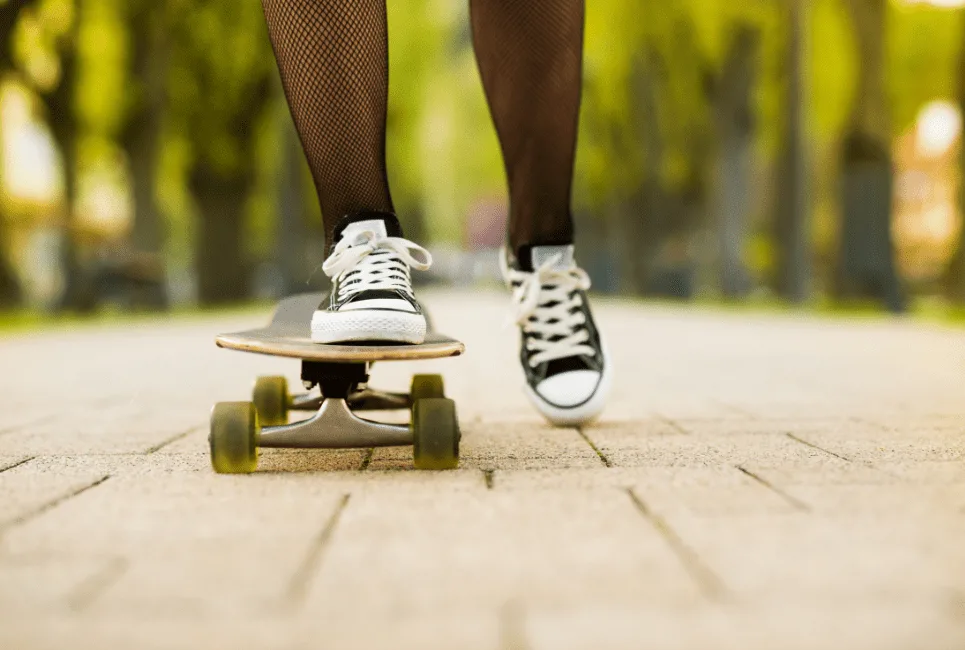- The 21 Best Skateboard Shoes — Reviews - September 29, 2020
Hey there, and welcome to Skate Culture Insider. If you have found your way here, particularly to this page, then chances are you are pretty early in the skateboarding journey. You may be flirting with the idea of buying a board, you may have spent a long time away from the sport and want to jump back in, you may be in the process of learning the absolute basics, or you may be looking for inspiration as to what trick to try next. Whatever the reason you find yourself with us, we are happy to have you here and we aim to offer help through our expertise—giving you the best chance of learning how to skate fast and in the most fun way possible.
Your goal in skating may be just to get around competently, to learn some tricks to impress friends, or perhaps you aspire to be the next Nyjah Huston. Well, whatever your goal, the road to each starts the same, by stepping on a board and making things happen. This is why we want to give you a hands-on guide explaining the process of learning to skate, giving you all the info you need to make a decision as to whether this sport is the one for you.
In this guide, we take a look at the reasons why you might take up skating, some of the tricks that you should be focusing on as a beginner, what you can do to speed up the learning process. Plus, we take a look at some of the hardest tricks out there so you can find something to aspire to throughout your skating journey. So join us as we explain what it takes to learn how to skateboard.
Why Learn How to Skateboard?
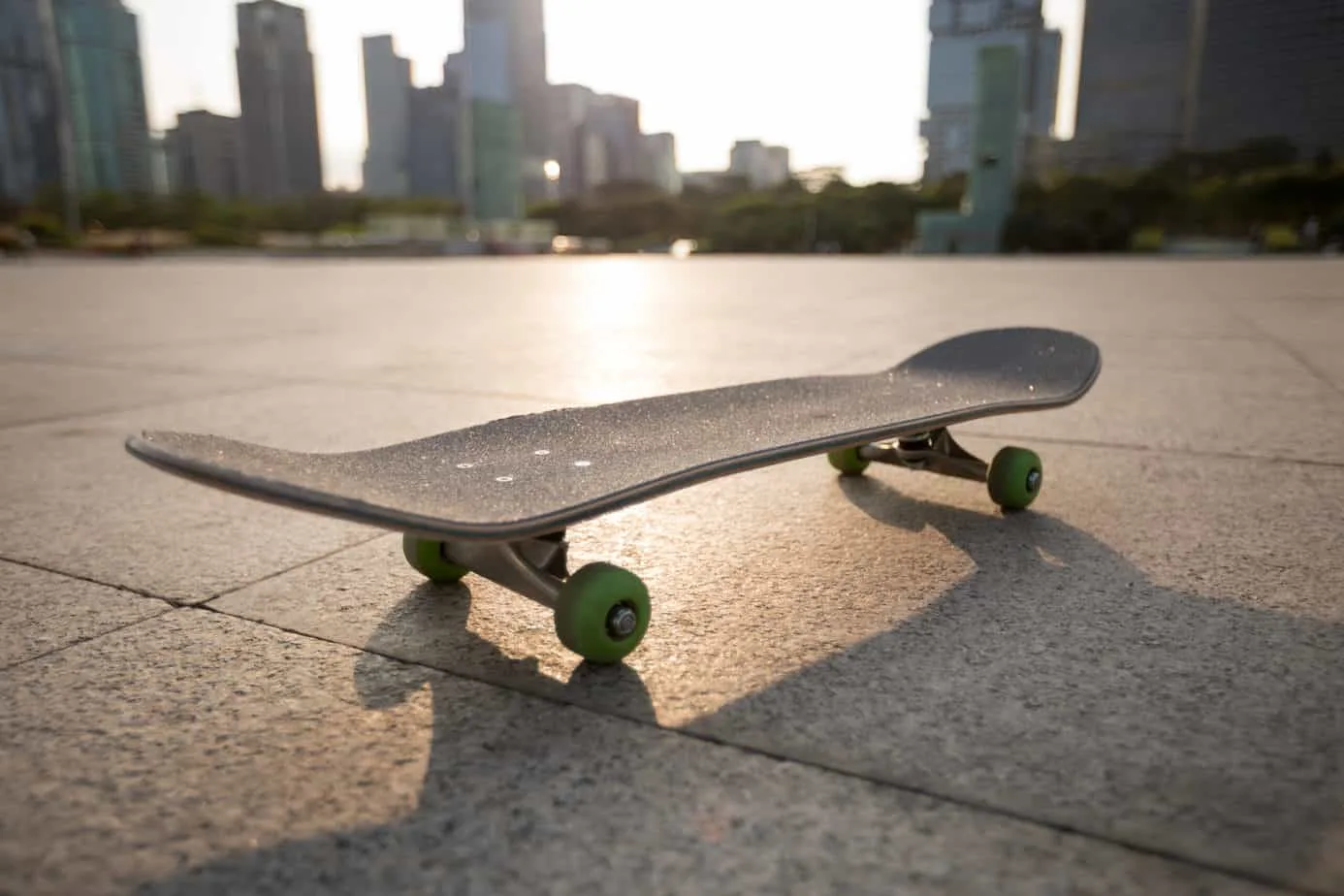
The first question that you need to ask yourself, and hopefully you will have an answer, is why should you learn to skate. This is a loaded question and one that can be complex or simple to answer, depending on how much you’ve thought about it before stepping on a board. Skating has a wide array of benefits to offer potential skaters, meaning that the reasons to learn would take far too long to list in their entirety. So here are the most popular reasons that people take up skateboarding:
Fitness
One reason that people pick up a board, especially those who are older teens or adults, is down to the fact that skating is a great way to stay active and fit. Skating is a great way to burn calories, enjoy hours at a time outdoors and if you are giving your all in a session, it’s not uncommon to be soaked in sweat. We only hope that you landed a few tricks to make those tired bones worthwhile.
The Community
Another reason that those on the outside looking in pick up skating is the community. Skating is a sport that has one of the most inclusive and supportive communities around. If you can’t land a trick, you can count on the guys and girls around helping you nail it. If you do nail a trick, you can rest assured that everyone at the park will be stoked for you. Plus, the skating lifestyle is a laidback and chill vibe which other sports simply can’t match. No one takes themselves too seriously and everyone wants to co-exist and have fun on four wheels. What’s not to love about that?
Bragging Rights
In the age of social media, having a tangible skill that you can showcase to the world is a commodity. So if you can skate well and know some tricks, this can be the golden ticket to likes, shares and general acclaim from your peers. Plus, even outside of the parameters of social media, there is nothing quite like landing a new trick after a long thought battle. So even being able to reminisce and tell friends about your accomplishments is a really nice feeling.
Fun Factor
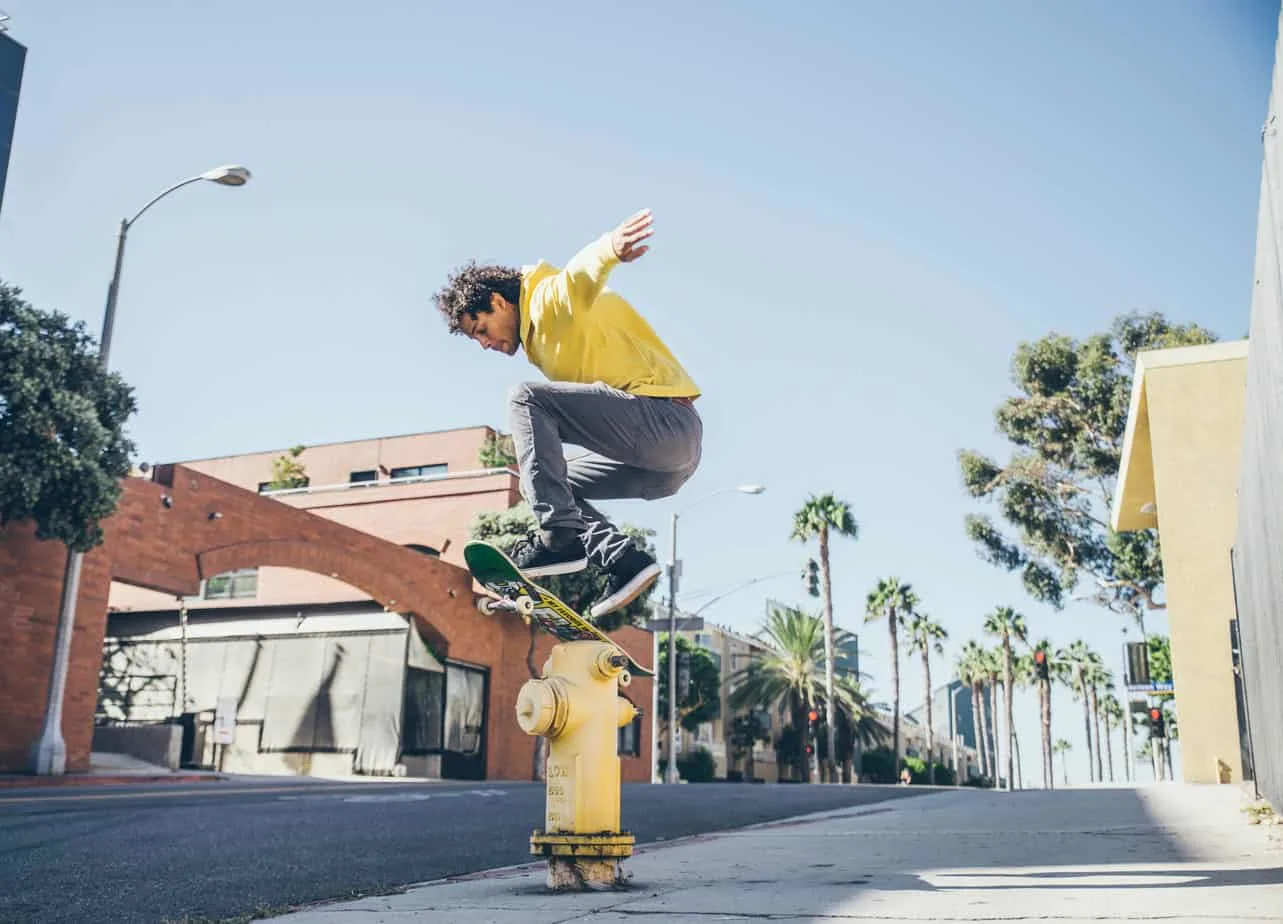
It sounds obvious, but it’s worth saying- skating around, feeling the wind in your hair, popping tricks and bombing down banks and ramps is fun. It’s a pastime that is so simple yet never gets old, is constantly evolving and even when you have it mastered, you’ll never want to set down the board. It’s an adrenaline rush, a means of challenging yourself and above all, it’s pure unbridled enjoyment.
The Competitive Side of Skating
Then lastly, there is the competitive aspect of skating. Whether that be simple games of SKATE with friends, local competitions, regional events, or chasing sponsors and pro status, skateboarding caters to all mindsets and so long as you have the talent and the desire, there will always be opportunities within the sport for you. Plus, with skating now an official Olympic sport, there is no better time to get serious about skating.
What Do You Need To Begin Skating?
Assuming that you already have confidence in spades and the desire to learn, there are some other essentials that beginner skaters will need before they can take to the skate park and tear it up. Here is a list of the things you will need to start your skating journey:
Skateboard: You know, the big plank of wood you stick the wheels onto and stand on. Yeah, you’ll need one of those. Make sure you get a board that is ideal for your size, make sure you get a design that you enjoy and be sure to buy Canadian Maple. Anything else is cheap rubbish which will only lead to you buying a new board sooner than you would like.
Trucks: These are the metal supports that attach to the underside of the board and hold the wheels in place. We would advise buying a good pair of trucks as premium trucks can potentially last years, whereas cheap trucks tend to only last months and usually require alternative bushings too.
Bearings: These are the little coloured discs that you cram into the circular space between the wheel. They might look rather underwhelming, but these components are solely responsible for spinning your wheels fast and allowing you to travel fast and across longer distances. These tend to come in AC7 and AC11 variants.
Wheels: You’ll need a set of wheels unless you want to relive the shambles of an experience that was Tony Hawk’s: Ride. Wheels tend to be somewhere between 52-54mm in diameter and come in varying degrees of softness to hardness. Soft wheels are ideal if you intend to skate parks and other very smooth areas, whereas hard wheels are better for rough surfaces and tend to be the ideal choice for cruisers and longboards.
Bushings: These aren’t always an essential purchase as they come as standard with new trucks, but if you go for budget trucks, the bushings will almost always be terrible. These components are responsible for making it easier to turn the board by applying pressure with the ball and heel of the foot.
How to Begin: The Fundamentals
So if you have your first setup and feel like it’s about time you hit the streets, you need to know what to focus on first. Well, while it might be tempting to go for huge jumps and sick flip tricks. It’s simply not realistic and never going to happen. Instead, you want to focus on getting good at the fundamentals of skating, giving you the foundation to build upon and learn the bigger and more impressive tricks later. Here is a quick list of the fundamentals that you will want to learn in order:
Rolling and stopping: Your goal on day one should be getting confident when rolling on the board and stopping the board. To do this, we would advise first getting comfortable standing on the board and getting the feeling of the wheels moving underneath you. Then we would urge you to start rolling by pushing the board with your dominant foot and standing back on the board. Then lastly, get to grips with stopping by planting that same dominant foot on the ground.
Turning: Next up, you’ll want to understand how to turn the board, allowing you to navigate those mean streets easily. Begin by learning how to turn using your trucks. This requires you to shift your weight onto the ball and heels of your feet to have the board turn left and right. However, this will only get you so far and won’t allow you to make sharp turns. For this, you will need to pop the tail of the board and sway your hips slightly in the direction you want to go in to change the trajectory of the board. This requires a good amount of balance, so don’t get bummed out if this takes a while to master.
Stances: Another thing that you should become comfortable with as early as possible is riding in alternative stances. You’ll want to learn how to ride fakie and switch as soon as you can. Fakie is when your feet are in their natural position, but you are moving backward. Whereas switch is where you are moving forward as normal, your dominant foot for popping/pushing is swapped. Learning this early will make tricks later down the line so much easier.
Ollie: Then, once you have mastered all of these things, it’s about time that you learned your first trick, the ollie; this is the gateway trick that opens up pathways to just about every other trick on a skateboard. To do this, you will need to have great balance, you will need to be comfortable popping the board and you will need to be comfortable rolling at speed. To do this trick, you simply pop the tail with your dominant foot, slide your other foot to the nose, leveling out the board in the air. Then you bend your knees upon landing to absorb the impact. It’s obviously a little more complex than that, but this is the gist. If you want the full tutorial, check out our how to ollie guide.
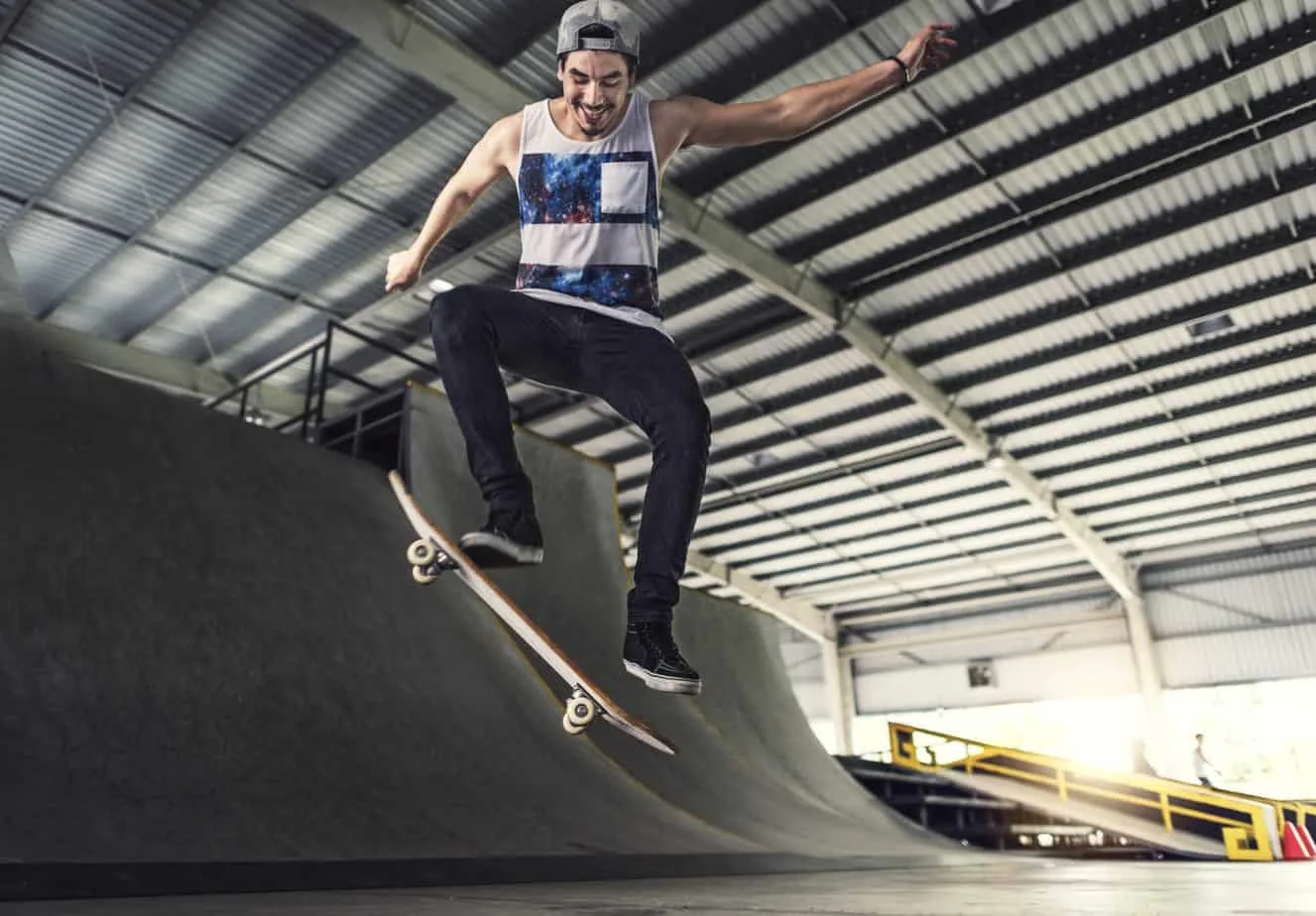
What Tricks Should I focus On Learning?
So this really depends on what style of skating you want to focus on. If you are more of a street skater, the tricks you will focus on will differ for those who want to learn transition or vert skating. So with that in mind, here is a list of the tricks that you should learn to do first in each school of skating in the order that you should attempt them:
Street Skating:
- Ollie
- Shove-it
- BS/FS 180’s
- Half Cabs
- Pop Shove-it
- Manuals
- Kickflips
- Heelflips
- Fakie big spins
- Varial flips
- Fakie Flips
- 3-shoves
- Tre-flips
- Boardslides
- ’50-’50s
- 5-0’s
- Smith grinds
- Crooked grinds
Tranny/Vert Skating
- Kickturns
- Bertslides
- Dropping in
- Rock to Fakie
- Rock N Roll
- Axle Stalls
- Layback stalls
- FS/BS Ollies
- 50-50 grinds
- Fakie Disasters
- Disasters
How to Tackle The Skate Park
One of the most daunting things for a new skater is simply existing within a skate park. Never mind utilizing the obstacles in the park. However, we promise you that this fear is misplaced and even if you are a complete beginner, there is a space for you in every park. You may be a little skeptical and for that reason, we have come up with some helpful tips that will make the whole process much more smooth for you. Here is how to tackle your local skate park:
Skate To Your Level
One of the most important things we can suggest is skating to your level. This means that if you can just about roll on a board, it’s probably not the time to drop into a half pipe or launch yourself off a huge kicker. Don’t be tempted to play up to those in attendance and simply work within your own personal skill set. Perfect your ollies, do some kick turns on ramps, go up and down some banks and when you feel ready, try the more difficult obstacles.
Skate Park Etiquette

While the skate park is a very accommodating and friendly space, there are few things more annoying for a veteran skater than a beginner skater loitering around a flat rail practicing ollies. Have the self-awareness to know when you are in the way, be aware of your surroundings when traveling around the park and try to follow the flow of the park if it happens to have one.
Make Your Time There Count
The great thing about skate parks is that they have obstacles and fixtures that are custom made for skating and can’t just be found on your street corner. So if you feel up to it, be sure to use your time wisely and hit the spots that you won’t be able to recreate when skating the street. Don’t hesitate to use the mini-ramp. Skate a rail if you think you have it in you and be sure to talk to the guys around you as they will likely be willing to help you progress or at the very least hang and have a chat.
The Most Common Mistakes When Learning to Skate
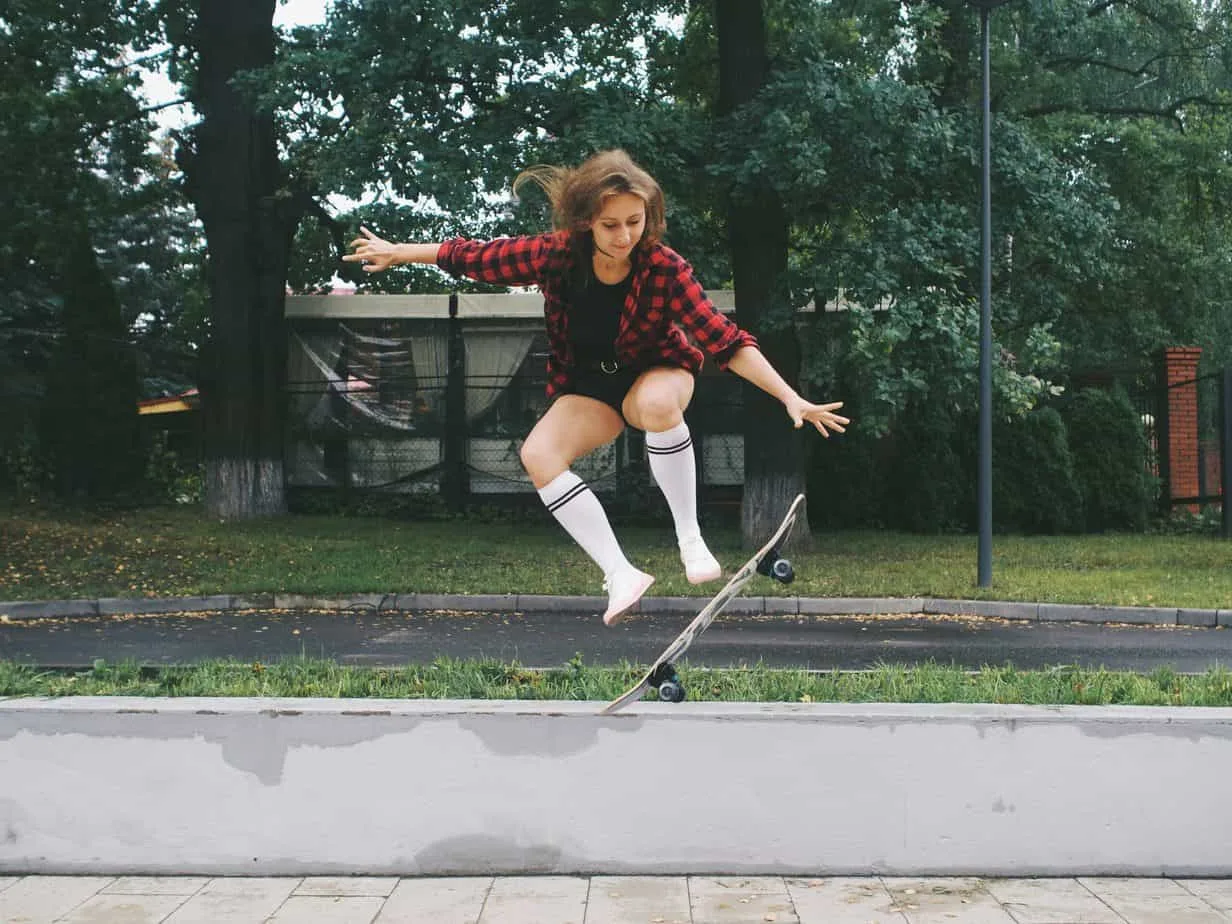
While everyone learns at their own pace and many skaters learn in different ways, adopting unique styles. There are some common mistakes that new skaters make that will hinder them from learning at an optimum pace. Here are some of the most common issues below:
Do a Kickflip!
We don’t know if it’s because of the blow-up in the nineties, the Tony Hawk’s Pro Skater games or the ignorance of non-skaters when pressuring beginners, but there are a lot of skaters that are hellbent on learning kickflips. Now, unless you have mastered all the fundamentals and have a decent ollie, this simply isn’t going to happen and even if you do, this is a trick that will take a lot of practice to do consistently. So please, don’t be tempted to stretch for tricks that are beyond your means.
Underestimating the Difficulty
Newsflash, people, skateboarding is not easy. Sure, you might be able to get around on the thing on day one. However, to be able to do tricks and make them look casual is something that comes with time and a lot of practice. It can take months before you even learn how to ollie and seeing as this is the gateway to most other tricks, skating can feel like a chore within that time. So make sure you understand the need to grind for each trick and to make things manageable in the early stages, skate with friends and don’t be too hard on yourself- like we said, it’s hard.
Buying the Wrong Gear
While skating is hard, buying the wrong gear just makes that uphill climb even steeper. There are several common errors that make learning tricks and getting your bearings on a skateboard even harder than usual, which is something that no one wants. So here are some things to consider:
- Don’t buy cheap gear: the chances are that it will break and you’ll be left with no board, no means of practicing and it will disrupt your progress. So go for good gear or, at the very least, trusted mid-tier brands.
- Buy the right size of skateboard: If you buy a board that is too small or too big, you’ll teach yourself bad habits to compensate for this and your learning process will be slower as a whole. Somewhere between 8″ to 8.5″ is usually a good bet
- Invest in a skate tool: If you have one of these with you every session, you can tighten your trucks, keep your hardware in check and generally monitor the condition of your board, making adjustments as needed.
What Can You Do To Learn Faster?
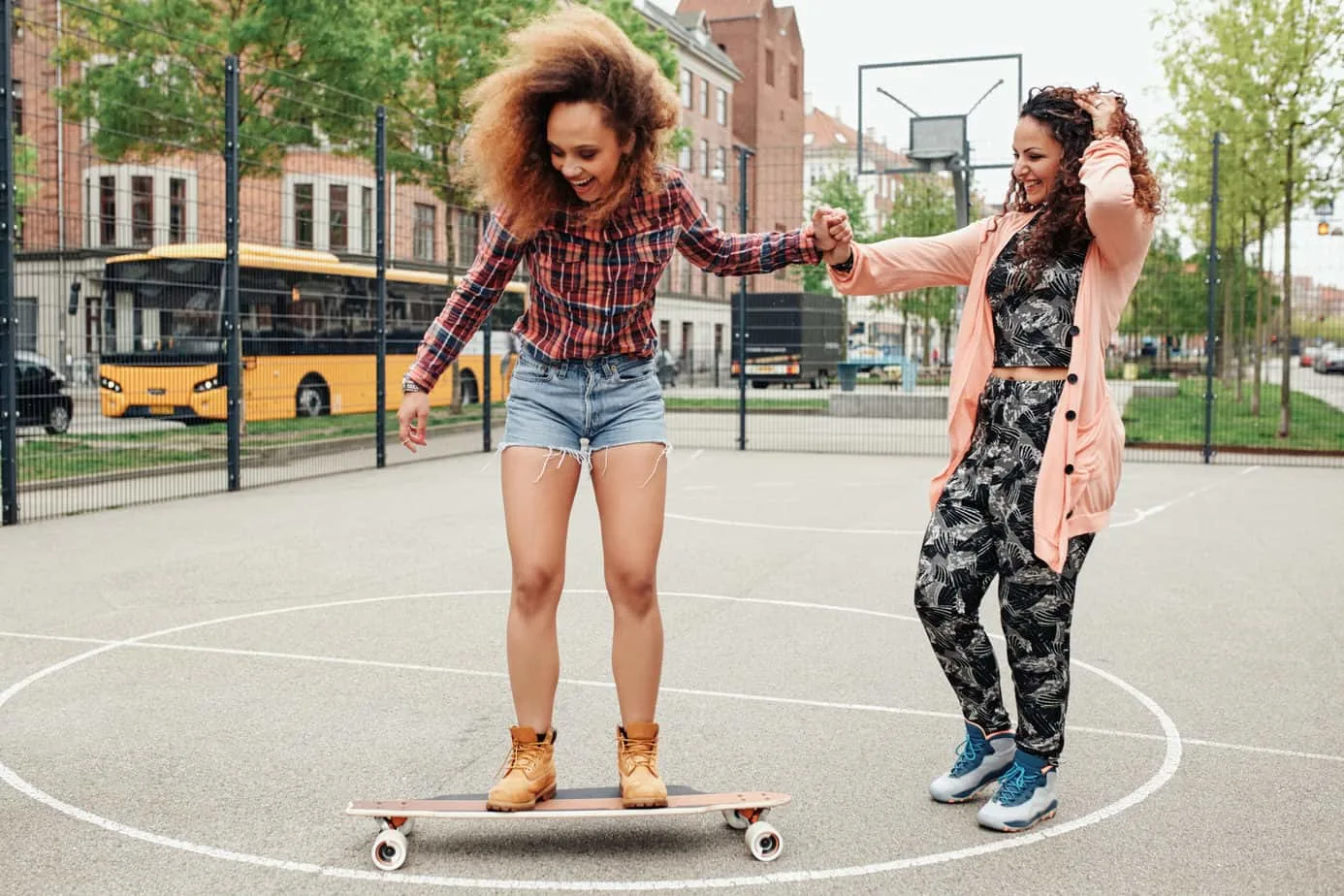
There are also some things that beginners can do to improve their learning experience and perhaps get a head start on others who started at the same time. Here are some things that you can consider doing to improve your skating progression:
Practice Makes Perfect!
Skating is all about workshopping your tricks and developing muscle memory. Something that only comes with time invested and consistent practice. So we would suggest that you get out at least a few times a week to practice. Plus, if you have to travel or make commutes, why not jump on your board and kill two birds with one stone. You could also put together a practice schedule depending on how dedicated to the sport you are, but we will leave that up to you.
Try Some Lessons
Perhaps it isn’t conducive to the laid-back and DIY nature of skating. However, if you really want to get better, lessons are a great way to do that. There are tonnes of skate parks with great skaters and even some pros who are more than happy to offer lessons, meaning that you can leapfrog some skaters that are self-taught and rip up the park in no time.
Buy Some Learning Gear
There are lots of great products out there that serve to give beginners a much easier time getting the basics of skating locked down. If you want to get grinds down, why not invest in your own rail that you can adjust and take with you to your local spot. Or perhaps you want to practice some flip tricks from a static position and a crack in the pavement just won’t cut it. Then you can invest in some silicone training wheels to hold you in place and practice tricks without the fear of the board slipping out from under you.
YouTube is your Friend
You probably have a smartphone in your pocket if it’s not in your hand right now. Well, this device is a portable trick tutorial tool. With the help of Youtube, you will be able to look up lines, tricks and other skating content which will help you learn and refine your own tricks. Channels that are excellent for this very purpose are Braille Skateboarding, VL Skate, Jonny Giger’s personal YT channel and Dale Decker’s as well.
Skate and Destroy
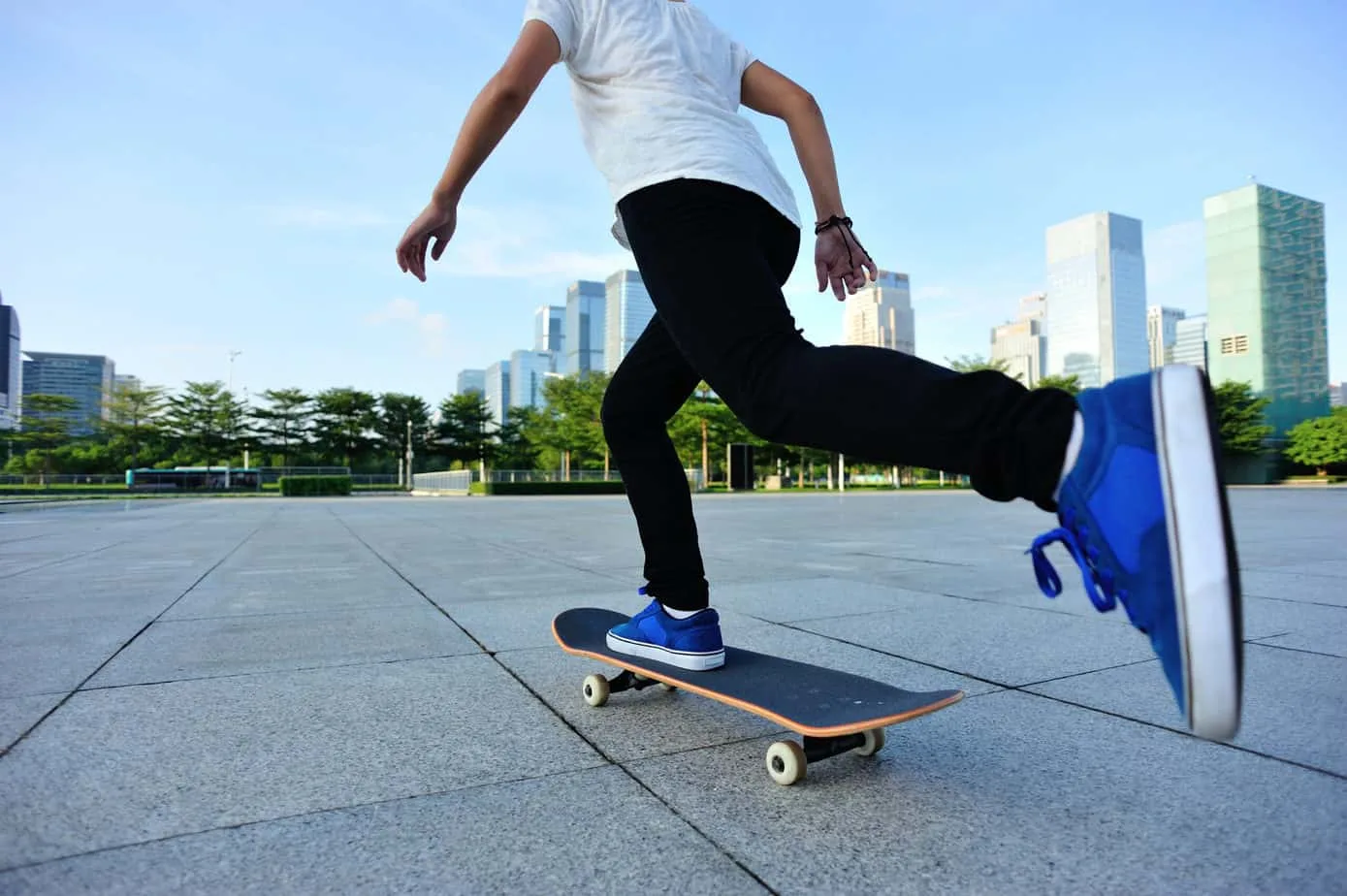
As you can see from the information above, skating is a tricky business to learn. However, with this guide, we hope that you will be able to get the fundamentals down to a tee and progress to become one of the finest skaters the world has ever seen. Just don’t forget us when you pick up your first X-Games gold!
FAQ Section
If you have reached the end of this article and you still don’t have what you are looking for, we have a series of additional FAQs that will help fill the blanks. Here they are below:
Answer: With skateboarding constantly evolving and technical skaters inventing new tricks on the regular, it’s very hard to pick just one. In terms of conventional and well-known skate tricks, we would probably say that tricks like the hardflip, tre-flip and lazer flip are right up there. However, with the constant array of new-age tricks, there are so many more to choose from. So here is a quick list of some other crazy tricks:
• Merlin flips
• Late flips
• Under flips
• Dark slide grinds
• Alpha flips
• Dolphin Flips
• Illusion Flips
• Casper flips
Answer: This is one that really depends on the context. If you feel you are close to it, we would say keep plugging away and you might get it. If you aren’t close, or you are getting frustrated, we would say walk away and come back to it fresh the next day. Or, alternatively, you can start doing stuff that you know you can do as a form of release or take a small break, then come back with a clear head. It’s a fine balance, but only you know what the right thing to do is.
Answer: There are a number of things that you can do to improve your skating ability, even when not skating. It may sound silly but simply absorbing the culture can make a huge difference. Here is a list of some of the things you can do:
• Watch skating videos, parts, podcasts and competitions
• Use a tech deck to workshop some trick mechanics
• Play skating video games and become familiar with new tricks and styles
So that is our guide on how to learn skateboarding. We hope you enjoyed it and be sure to check out our other content teaching you specific tricks and much more. As always, thanks for reading Skate Culture Insider.
For more interesting readings check out:
